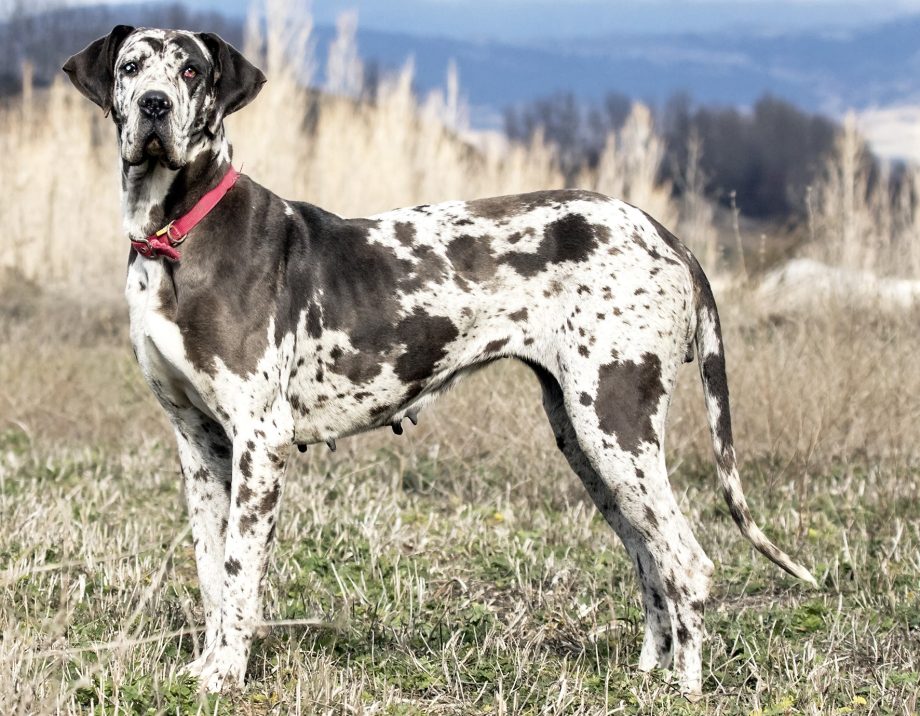The Great Dane is the gentle giant of the dog world, known for its imposing size and easygoing nature.
Standing at a height of up to 80 cm high and weighing in at up to 80 kg, the Great Dane is a majestic sight. It has a long muscular body, with long straight forelegs, a massive head which is narrow and flat on top, droopy jowls and a short sleek coat. Great Danes are gentle, affectionate and playful dogs that love spending time with their family. They are good with children, although perhaps not entirely suitable for younger children due to their tremendous size and strength. Generally, they do well with other dogs, especially with early socialisation, although due to their strong prey drive, careful introductions should be made with other household pets. They require a substantial amount of exercise, although care should be taken when exercising puppies as too much too soon could harm their bone and joint development. Due to its tremendous size, the Great Dane is only suitable for strong owners that can offer it plenty of space and exercise, and keep up with its large appetite! Potential owners should also be aware that the breed has poor longevity, often living less than 8 years.

History
The Great Dane is believed to be of German origin, although Dane-like dogs existed across Russia and Poland as well as Germany throughout the Middle Ages. Their great size saw them used as boar hunters, working in packs to bring down large boar. In the 18th Century, they became popular with the German nobility as guardians of estates and carriages.





